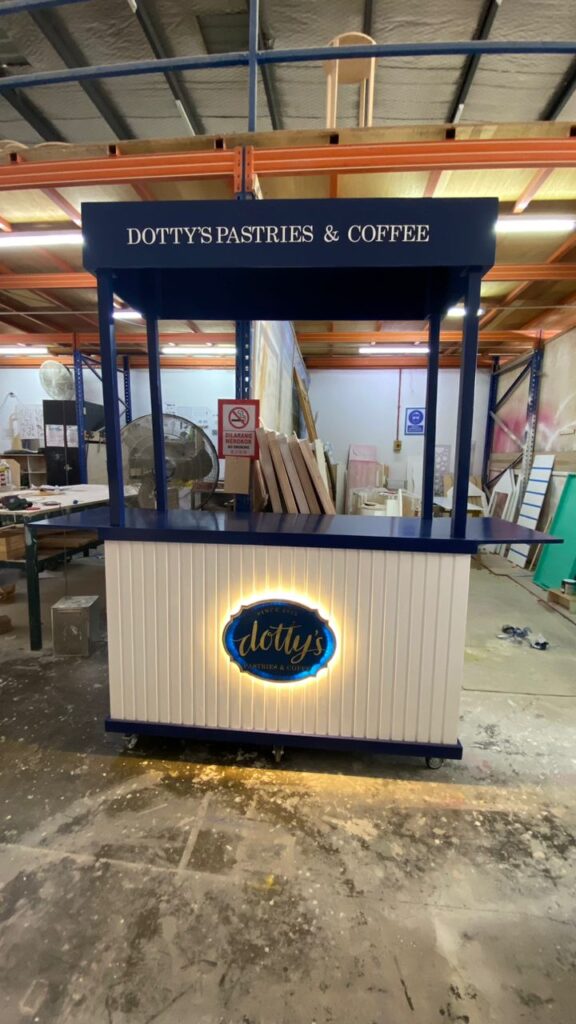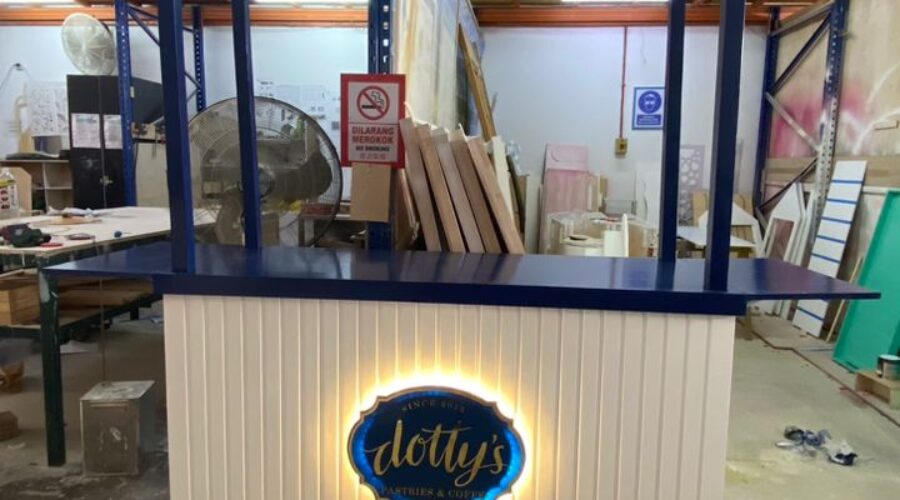Custom Push Carts: A Cost-Effective to Alternative Food Trucks

I. Introduction to Custom Push Carts
A. Definition and basic features
Hey there, food lovers! Have you ever thought about starting your own mobile food business but felt overwhelmed by the cost of a food truck? Well, I’ve got some great news for you – custom push carts are here to save the day! These nifty little mobile kitchens are exactly what they sound like: carts that you can push around, equipped with everything you need to serve up delicious street food.
Custom push carts typically include a cooking area, storage space for ingredients, and a serving counter. They’re compact, easy to maneuver, and can be customized to fit your specific needs. Trust me, these carts pack a punch despite their small size!
B. Historical context of street food vending
Let’s take a quick trip down memory lane. Street food vending has been around for centuries, with push carts being a common sight in cities across the world. From the hot dog carts in New York City to the taco stands in Mexico City, push carts have long been a part of urban food culture.
I remember my grandpa telling me stories about buying roasted chestnuts from a cart on a chilly winter evening in London. It’s amazing how these simple carts have been feeding people and supporting entrepreneurs for generations!
C. Comparison with traditional food trucks
Now, you might be wondering, “How do push carts stack up against food trucks?” Well, let me break it down for you:
Size: Push carts are much smaller, making them easier to store and transport.
Cost: They’re significantly cheaper to buy and maintain than food trucks.
Mobility: You can set up shop almost anywhere with a push cart.
Menu: While food trucks can offer larger menus, push carts encourage creativity within constraints.
I once met a chef who started with a food truck but switched to a push cart. He told me, “It forced me to focus on what I do best, and my customers love the simplicity!”
II. Advantages of Custom Push Carts
A. Lower initial investment
Let’s talk money, folks! One of the biggest perks of starting with a custom push cart is the lower upfront cost. While a food truck can set you back tens of thousands of dollars, you can get a fully equipped push cart for a fraction of that price.
I remember when I was first thinking about starting my own food business. The cost of a food truck nearly gave me a heart attack! But when I discovered push carts, I realized my dream was actually within reach.
B. Increased mobility and flexibility
With a push cart, the world (or at least your city) is your oyster! These carts are designed to be easily moved, allowing you to chase the crowds and maximize your profits. Having a bad day at your usual spot? No problem! Just push your cart to a busier location.
This flexibility came in handy for a friend of mine who runs a coffee cart. She told me, “I can be at the park for the morning joggers, outside the office buildings for the lunch crowd, and at the local baseball game in the evening. It’s amazing!”
C. Simplified licensing and regulations
Here’s a little secret: in many cities, the regulations for push carts are less stringent than those for food trucks. This means less paperwork, fewer fees, and a quicker path to getting your business up and running.
Of course, you’ll still need to follow food safety regulations and obtain the necessary permits. But in my experience, the process is usually much simpler for push carts.
III. Designing Your Custom Push Cart
A. Choosing the right size and layout
When it comes to push carts, size matters! You’ll want to strike a balance between having enough space to work comfortably and keeping your cart manageable to move around.
Think about your menu and the equipment you’ll need. Do you need a grill? A refrigerated section? A cash register? Sketch out a few layouts and see what works best for you. Remember, every inch counts in a push cart!
B. Essential equipment and storage solutions
Even with limited space, you can fit a surprising amount of equipment into a well-designed push cart. Some essentials might include:
A cooking surface (grill, griddle, or burners)
Food storage containers
A small refrigerator or cooler
Utensils and serving equipment
A hand-washing station (often required by health regulations)
Get creative with storage solutions! I’ve seen push cart owners use magnetic strips to hold utensils, install fold-down prep surfaces, and use stackable containers to maximize space.
C. Branding and visual appeal
Your push cart is more than just a mobile kitchen – it’s a moving billboard for your business! Invest in eye-catching graphics, a memorable logo, and a color scheme that reflects your brand.
I once saw a push cart that was designed to look like a miniature 1950s diner, complete with chrome accents and retro signage. It was so cool that people were lining up just to take pictures with it!
IV. Menu Planning for Push Cart Success
A. Selecting suitable dishes for limited space
When planning your menu, think about dishes that are easy to prepare in a small space and can be served quickly. Street food classics like tacos, hot dogs, or crepes are popular for a reason!
You might also consider focusing on one signature dish and doing it really well. I know a guy who sells nothing but grilled cheese sandwiches from his push cart, but he offers a variety of gourmet fillings and people can’t get enough of them!
B. Ingredient management and storage
With limited storage space, you’ll need to be smart about your ingredients. Focus on versatile items that can be used in multiple dishes. Consider prep work you can do off-site to save space and time during service.
I’ve found that using a just-in-time inventory system works well for push carts. This means buying only what you need for a day or two, which helps keep your ingredients fresh and your storage needs minimal.
C. Pricing strategies for profitability
Pricing can be tricky, but here’s a simple rule of thumb: aim for food costs to be about 30% of your selling price. Don’t forget to factor in your other expenses like labor, permits, and equipment maintenance.
Remember, people expect street food to be affordable, but they’re also willing to pay a bit more for quality and uniqueness. Find that sweet spot where your customers feel they’re getting a good value, and you’re making a decent profit.
V. Location and Marketing Strategies
A. Identifying high-traffic areas
Location, location, location! It’s crucial for any business, but especially for a push cart. Look for areas with lots of foot traffic, like business districts, college campuses, or popular parks.
Don’t be afraid to experiment with different locations to find what works best for you. I know a push cart owner who keeps a diary of her daily sales at different locations. After a few weeks, she had a clear picture of where she should be on any given day of the week.
B. Building a social media presence
In today’s digital age, social media is your best friend. Use platforms like Instagram, Twitter, or TikTok to showcase your food, share your location, and connect with customers.
I love how some push cart owners use social media creatively. One of my favorites posts daily riddles – if you solve the riddle, you get a hint about where the cart will be that day. It’s turned finding the cart into a fun game for customers!
C. Participating in local events and festivals
Events and festivals are golden opportunities for push cart owners. They bring together large crowds of hungry people looking for quick, tasty bites.
Reach out to event organizers in your area and see if they’re looking for food vendors. I’ve found that many events are more open to push carts than food trucks because they take up less space and are easier to accommodate.
VI. Overcoming Challenges of Push Cart Vending
A. Weather-related issues and solutions
Let’s face it, when you’re working outdoors, Mother Nature can sometimes throw a wrench in your plans. Rain, extreme heat, or cold can all impact your business.
Be prepared with solutions like umbrellas or awnings for your cart, portable heaters for cold days, or misting systems for hot weather. I know a gelato cart owner who actually does better business on hot days – she says people line up for a cool treat when the sun is blazing!
B. Maintaining food safety standards
Food safety is paramount in any food business, but it can be extra challenging in a small, mobile kitchen. Make sure you’re up to date on all local health regulations and best practices for food safety.
Invest in good quality coolers or refrigeration units to keep perishables at safe temperatures. Always have a supply of clean water for hand washing and cleaning. And don’t forget regular cleaning and sanitizing of all surfaces and utensils!
C. Managing customer flow and wait times
On busy days, you might find yourself with a line of hungry customers. Efficient service is key to keeping that line moving and your customers happy.
Consider streamlining your menu during peak times, or have pre-made items ready to go. You might also want to invest in a portable point-of-sale system to speed up transactions. I’ve seen some clever push cart owners use a numbering system for orders, allowing customers to step aside while their food is being prepared.
VII. Scaling Your Push Cart Business
A. Expanding to multiple carts
Once you’ve got your first cart running smoothly, you might start thinking about expansion. Adding more carts can help you serve more customers and test out new locations.
Just remember, each new cart means more management responsibility. Make sure you have reliable staff and good systems in place before taking this step. I know a couple who started with one pretzel cart and now run a fleet of five – they say the key was growing slowly and training their team well.
B. Transitioning to a brick-and-mortar location
For some push cart owners, the ultimate goal is to open a permanent restaurant. Your cart can be a great way to build a customer base and test your concept before making this big leap.
If you’re considering this move, start by looking at your financials. Are you consistently profitable? Do you have a loyal customer base? These are good indicators that you might be ready for a brick-and-mortar location.
C. Franchising opportunities
If your push cart concept is really taking off, you might consider franchising. This allows other entrepreneurs to use your brand and business model in exchange for fees.
Franchising can be a great way to expand your brand without taking on all the risk and investment yourself. However, it’s a complex process that requires careful planning and often legal assistance. If you’re interested in this path, I’d recommend talking to a business advisor or lawyer who specializes in franchising.
VIII. Summary
Custom push carts offer an exciting, accessible way to enter the world of mobile food vending. They’re cost-effective, flexible, and can be a stepping stone to bigger things in the food industry. Whether you’re a culinary school graduate with big dreams or a home cook with a killer recipe, a push cart could be your ticket to entrepreneurial success.
Remember, starting any business takes hard work and dedication. But with a push cart, you have the advantage of lower startup costs and the flexibility to adapt quickly. So why not give it a try? Your future in the food business might just be a push cart away!
IX. Frequently Asked Questions
1. How much does it cost to start a custom push cart business?
The cost can vary widely depending on your specific needs, but you can generally expect to spend between RM2,000 to RM10,000 for a well-equipped custom push cart. This is significantly less than the RM50,000 or more you might spend on a food truck. Don’t forget to factor in additional costs like permits, ingredients, and marketing materials.
2. What types of food are best suited for push cart vending?
Foods that are easy to prepare and serve quickly work best for push carts. Some popular options include:
Hot dogs and sausages
Tacos and burritos
Ice cream and frozen treats
Pretzels and other baked goods
Coffee and beverages
Crepes or pancakes
The key is to choose foods that don’t require a lot of complex preparation or cooking equipment.
3. Do I need special permits to operate a push cart?
Yes, you’ll typically need permits to operate a push cart, although the specific requirements can vary depending on your location. Generally, you’ll need:
A business license
A food handler’s permit
A health department permit
A permit to operate in public spaces (if applicable)
It’s best to check with your local health department and city hall for the exact requirements in your area.
4. How can I ensure food safety in a small mobile kitchen?
Maintaining food safety in a push cart requires diligence, but it’s definitely doable. Here are some key practices:
Keep hot foods hot (above 140°F) and cold foods cold (below 40°F)
Use a separate hand washing station
Clean and sanitize all surfaces regularly
Store food properly to avoid cross-contamination
Use gloves when handling ready-to-eat foods
Get regular health inspections
Remember, food safety should always be your top priority!




